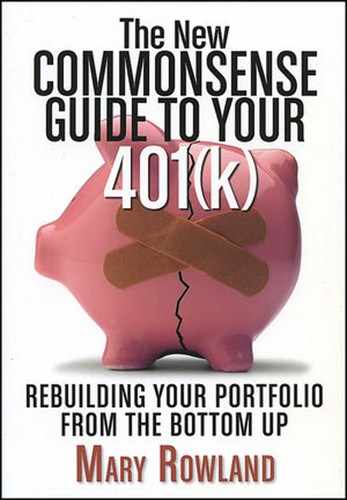WHEN I WAS A BEGINNING INVESTOR, I thought the game was to find the investment with the highest possible return. That's what we all want, isn't it? Don Phillips at Morningstar taught me that if two investors assemble portfolios with the same mandate and one earns twice as much, it's because the manager took twice as much risk. If a market index of big-company stocks like the Standard & Poor's 500 Index provides a return of 10 percent over a one-year period and a mutual fund that invests in large-cap stocks returns 25 percent, that portfolio took more risk.
Professional investors use a variety of academic tools to measure risk and to analyze and compare the performance of different stocks and mutual funds. You don't need to employ these tools to invest your 401(k) money well, but I believe it's always an advantage to understand more rather than less. And a better understanding of risk can benefit you. The most common measurement of risk, and perhaps most useful to individual investors, is standard deviation, which shows how far the return of a mutual fund might be expected to deviate from its average return, based on its history. Think of a bell curve with the average—or mean—in the middle, and a wide band above and below that average. Statistics tell us that we can expect the returns of a fund to fall within 1 standard deviation from the mean two-thirds of the time. Returns can be expected to fall within 2 standard deviations 95 percent of the time.
For instance, let's say the average, or mean, return for Fund X over a period of three years is 10 percent. The standard deviation is also 10. So one standard deviation encompasses returns from 0 percent to 20 percent; 2 standard deviations range from minus 10 to 30 percent. If you looked at such a fund, you might say that there is almost no chance that you will lose more than 10 percent or gain more than 30 percent in a year with this fund, based on its history. If the same fund had a standard deviation of 15 percent, the range of your expected returns (assuming 2 standard deviations is your expected range) would fall between –20 percent and 40 percent.
Let's look quickly at the three tools of modern portfolio theory. Beta measures risk or the volatility of a fund relative to the market; alpha attempts to measure the value added or subtracted by a portfolio manager by showing the performance of a fund relative to the risk it took. And R-squared attempts to show how much confidence you can put in a fund's beta and alpha by showing you how similar the fund is to the market. We'll start at the bottom.
R-squared shows the percentage of movement in a particular security or mutual fund that is explained by the movement in an index, ranging from 0 to 100. So a stock or fund that moves in tandem with the S&P 500 would have an R-squared of 100 because 100 percent of its movement is explained by the movement of the S&P. So it is that the Vanguard Index 500 has an R-squared of 100. All of its movement is attributed to changes in the index itself. But very little of the movement of the Japan Fund, for example, is explained by the movement of the S&P index. You might compare SPY to the Japan Fund if you are looking for two investments with a low correlation.
Beta measures the volatility of a fund by comparing its return to the return of a benchmark, which has a beta of 1.0. A fund with a beta of 1.0 tracks the movement of the index exactly. A fund with a beta of 1.25 has 25 percent more volatility. That means you can expect it to rise 25 percent more in an up market and sink 25 percent more in a down market. A fund with a beta of 0.75 is less volatile than the market. You can expect a return 25 percent lower than the overall market when the market goes up and to lose 25 percent less when the market goes down. Of course, these are not guarantees but simply another way to measure risk.
Alpha is an attempt to measure the value a manager adds or subtracts. A positive alpha implies the manager delivered more return than could be expected given the risk that he took. A negative alpha suggests that the portfolio investors were not compensated for the risk.
